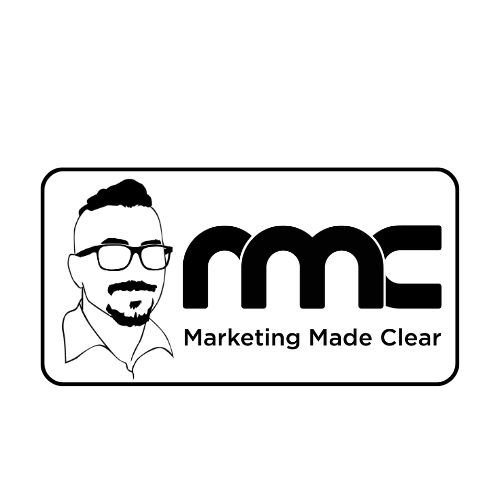How Do You Know if Marketing Has Worked? Measuring Marketing Effectiveness.
As marketers, we are – and should be – challenged to justify marketing spends. This goes hand-in-hand with a question I asked in Episode 1 of the Marketing Made Clear podcast; how do I know if marketing has worked?
Well, this is really part and parcel of being a marketer, but it comes with a huge challenge. Remember that quote by John Wanamaker:
“Half the money I spend on advertising is wasted; the trouble is I don’t know which half.”
Well, that quote dates back to 1919 – over 100 years ago:
- 50 years before the first personal computers
- 40 years before the electric calculator
For a long time, Wanamaker’s quote was widely used by marketers – not as a get out of jail card – but to emphasise the difficulty in measuring marketing effectiveness.
However, since the late nineties, consumers have moved more towards purchasing online, and we do have a lot more tricks and tools to measure marketing effectiveness. It’s not 100%, but it usually gives a good indication as to whether a campaign is proving effective.
Note:
This article features content from the Marketing Made Clear podcast. You can listen along to this episode on Spotify below:

Measuring Marketing Effectiveness
I have to say – that of course, marketing should be judged on sales. But that doesn’t mean that is the be all and end all of the process.
There are so many other objectives than just sales. It comes down to the objectives of a campaign, and these can usually be converted into “conversions” on digital advertising platforms. That helps us a lot as we can then easily measure the success of our campaigns.
Digital Advertising
Some platforms are better than others – especially when we’re talking about ecommerce. With Google Ads and Facebook Ads, everything is very traceable. You can measure clicks on an advert and conversions, which are usually a sale, signup, or subscription. Google, in particular, claims an 800% return on investment on advertising spend, which is an 8-fold return on investment!
Some of the most common platforms for analysing marketing include the advertising platforms themselves. Although there are some alternatives that consolidate campaign data – you can’t get away from the following list:
- Google Analytics / Google and YouTube Ads – One of the most comprehensive web analytics service which tracks and reports website traffic. It’s also free which helps!
- Adobe Analytics – A slightly more advanced analytics solution that provides deep insights and predictive analytics – this is a paid platform.
- HubSpot – Another paid platform, although free options exist probably best if you are using the Hubspot suite of marketing, sales, and service software. Includes detailed tracking and reporting features.
- Google Ads – THE number one Pay-per-click (PPC) advertising platform. Extensive reach across Google Search and Display Networks.
- Meta Ads – THE number one social media advertising platform that controls advertising on both Facebook and Instagram. Targeted ads based on user demographics, interests, and behaviours.
- LinkedIn Ads / Twitter/X Ads / Snapchat Ads / Pinterest Ads / TikTok Ads / Reddit Ads – The advertising platforms for the social platforms. LinkedIn offers targeting options for B2B marketing based on job titles, industries, and companies. Twitter Ads enables social media advertising on Twitter including promoted tweets, accounts, and trends.
- Bing Ads (Microsoft Advertising) – An often overlooked advertising platform that is an alternative to Google. Offers pay-per-click advertising on the Bing search engine. Often less competition and lower costs compared to Google Ads.
- Amazon Advertising – E-commerce platform advertising. Sponsored products, brands, and display ads within Amazon’s ecosystem.
- AdRoll – Retargeting and prospecting platform. Multi-channel advertising across web, social, and email.
- Yahoo Gemini (Verizon Media Native) – Native advertising and search ads. Combines Yahoo and AOL networks.
If you are following a logical process, your advertising platforms of choice will be selected based on your objectives. So your top-10 platform list may look very different to mine, so I have put together a list of ten honourable mentions, which includes:
- Mixpanel – User analytics platform. Focuses on tracking user interactions with web and mobile applications.
- Segment – Customer data platform. Collects and integrates customer data.
- Heap – Automated insights and analytics. Automatically captures all user interactions.
- Kissmetrics – Behavioral analytics and engagement platform. Focuses on user interactions and conversion tracking.
- Pendo – Product analytics and user feedback. Helps understand user engagement and behaviour.
- Matomo – Open-source analytics platform. Provides detailed reports on website visitors.
- Woopra – Customer journey analytics platform. Offers real-time tracking and user segmentation.
- Sprinklr – An AI led Social media management with analytics. Tracks engagement across multiple social platforms.
- Quora Ads – Question-and-answer platform advertising. Contextual targeting based on user questions and interests.
- Spotify Ads – Audio and video advertising on the music streaming platform. Sponsored playlists, audio ads, and video takeovers.

Content Marketing and Brand Awareness
But if we are talking about other areas of marketing, particularly content-related or a campaign that might be more targeted at increasing brand awareness, ROI will be measured in other terms – not necessarily financial.
There’s a hot debate here! Many experienced marketers would be screaming at me for using the term “increasing brand awareness.” The main criticism of this is that people are not measuring current brand awareness before conducting a brand awareness campaign. That means that after the campaign, if they measured the success of the campaign, they have nothing to compare it to.
This comes back to – what are the objectives of the campaign?
Under the umbrella term of brand awareness, it may be about raising awareness with a particular group of consumers, or it might be getting existing customers to read an article that has been written to increase brand loyalty.
The possibilities are endless, really. I’m going to move forward before I get put in the marketing sin bin…
The Role of Strategy
We will look at Return on Investment (ROI) in a future episode of the Marketing Made Clear podcast – it’s a huge topic, and this is definitely not a deep dive. But I just want to say that strategy plays a big part here too. Something I will cover in this season of the podcast is Marketing Strategy.
I like to visualise marketing strategy as a funnel – in fact, this is quite a common way to visualise it. The idea is that consumers move through the funnel, from learning about your company to engaging with your company in some way, building up purchasing intent, finally converting – so buying or subscribing, and then on to repeat purchase.
Why I’m bringing this up is because the marketing activities you use at each stage will be geared towards a specific goal.
Soooooooo…. You should measure the success of that marketing activity in the context of its objective!
Conclusion
In summary, measuring marketing effectiveness is a multi-faceted task that depends heavily on the tools at your disposal and the objectives of your campaign. While digital advertising platforms like Google Ads and Facebook Ads offer concrete metrics and traceability, content marketing and brand awareness campaigns require different measurement approaches.
The key is to align your measurement tactics with your campaign goals and continuously refine your strategy based on the data collected.
Like I said; You should measure the success of that marketing activity in the context of its objective!
By understanding the different ways to measure success and the importance of setting clear objectives, marketers can move beyond Wanamaker’s century-old conundrum and make more informed decisions that drive real results.
Up Next:
Why is marketing called marketing?


